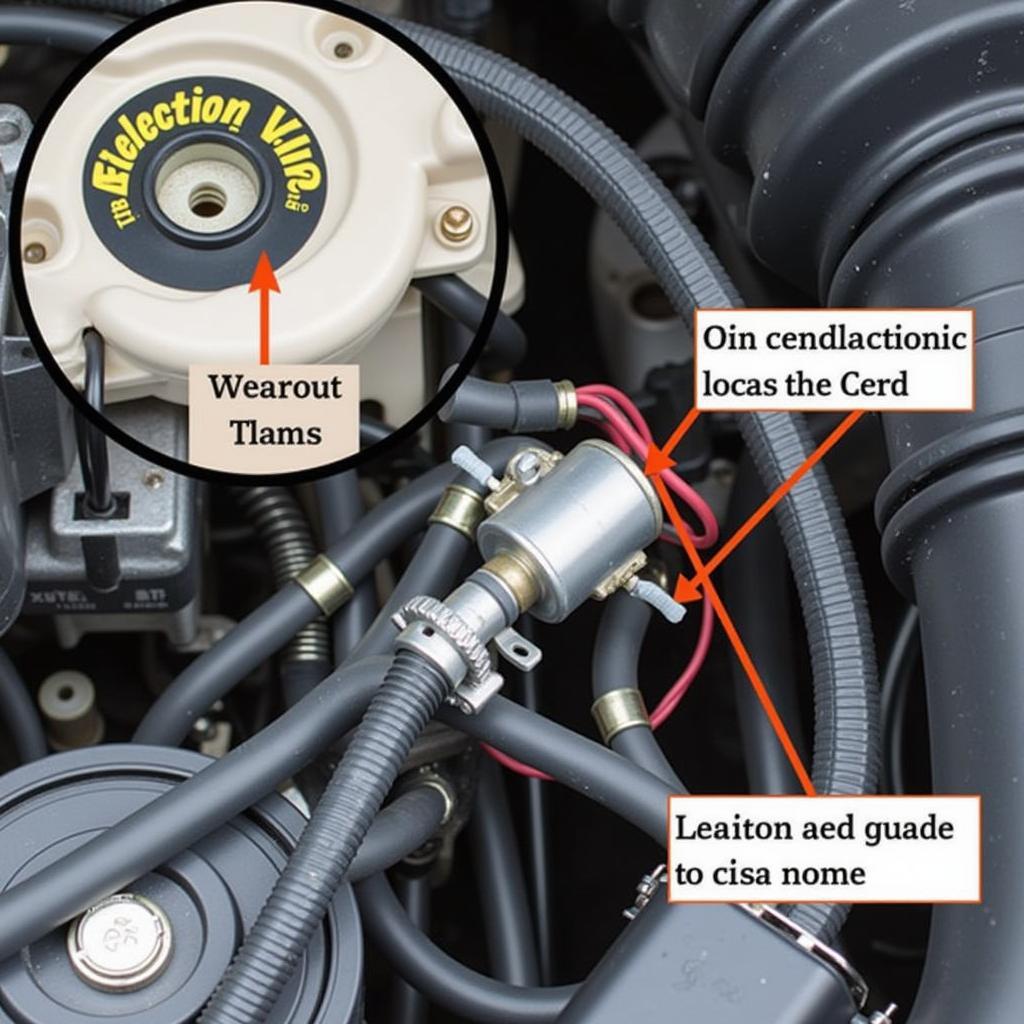The dreaded P0400 code. It’s a common sight for many car owners, and it can be a real headache to diagnose and fix. This guide will walk you through everything you need to know about How To Fix Car Code P0400, from understanding what it means to troubleshooting and repairing the underlying issue. We’ll cover common causes, diagnostic steps, and repair options, empowering you to tackle this problem head-on.
Understanding the P0400 Code: Exhaust Gas Recirculation Flow
The P0400 code indicates a problem with your vehicle’s Exhaust Gas Recirculation (EGR) system. Specifically, it signifies a malfunction in the EGR flow. The EGR system plays a vital role in reducing harmful nitrogen oxide (NOx) emissions by recirculating a portion of your engine’s exhaust gases back into the intake manifold. This lowers combustion temperatures and reduces NOx formation. When the P0400 code pops up, it means the engine control module (ECM) has detected an issue with the flow of these gases.
Common Causes of the P0400 Code
Several factors can trigger a P0400 code. Understanding these can help you narrow down the problem quickly. Common culprits include:
- Clogged EGR Valve: Carbon buildup can restrict the EGR valve’s movement, preventing proper flow.
- Faulty EGR Solenoid: The EGR solenoid controls the vacuum to the EGR valve. A malfunctioning solenoid can disrupt valve operation.
- Blocked EGR Passages: Like the valve itself, the passages that carry exhaust gases can become clogged with carbon deposits.
- Vacuum Leaks: Leaks in the vacuum lines supplying the EGR system can prevent the valve from opening or closing correctly.
- Faulty DPFE Sensor: The Differential Pressure Feedback EGR (DPFE) sensor measures the pressure difference across the EGR orifice. A faulty sensor can send incorrect signals to the ECM, leading to a P0400 code.
 P0400 Code: EGR Valve Location
P0400 Code: EGR Valve Location
Diagnosing the P0400 Code: A Step-by-Step Guide
- Check for Other Codes: Sometimes, the P0400 code can be accompanied by other related codes. Addressing these other issues first may resolve the P0400 code as well.
- Visual Inspection: Start by visually inspecting the EGR valve, solenoid, and associated vacuum lines for any obvious damage or blockages.
- Check Vacuum Lines: Inspect vacuum lines for cracks, kinks, or disconnections. A simple vacuum test using a hand pump can help identify leaks.
- Test the EGR Valve: Apply vacuum directly to the EGR valve with a hand pump. The engine should stumble or stall if the valve is functioning correctly.
- Test the EGR Solenoid: Use a multimeter to test the resistance and voltage of the EGR solenoid according to the manufacturer’s specifications.
- Check the DPFE Sensor: Inspect the DPFE sensor for signs of damage or contamination. Test the sensor’s voltage output using a multimeter.
 P0400 Code: Testing the EGR Valve
P0400 Code: Testing the EGR Valve
Repairing the P0400 Issue: What to Do
- Cleaning the EGR Valve: Often, a simple cleaning can resolve the issue. Use carburetor cleaner and a small brush to remove carbon buildup from the valve and passages.
- Replacing the EGR Valve: If cleaning doesn’t work, the valve may need to be replaced.
- Replacing the EGR Solenoid: A faulty solenoid should be replaced.
- Repairing Vacuum Leaks: Replace any damaged or leaking vacuum lines.
- Replacing the DPFE Sensor: A faulty DPFE sensor needs replacement.
“Regular maintenance, like cleaning the EGR valve, can prevent many P0400 issues,” says John Miller, a seasoned automotive engineer with over 20 years of experience. “Don’t wait for the code to pop up before you address potential problems.”
How to Fix Car Code P0400: Conclusion
Addressing the P0400 code doesn’t have to be a daunting task. By understanding the EGR system, following the diagnostic steps, and implementing the appropriate repairs, you can get your car back on the road smoothly. Remember, a properly functioning EGR system is crucial for both engine performance and environmental protection. If you’re feeling overwhelmed, don’t hesitate to connect with us at AutoTipPro for expert assistance. You can reach us at +1 (641) 206-8880 or visit our office at 500 N St Mary’s St, San Antonio, TX 78205, United States.
“Addressing the P0400 code early can save you money and prevent more serious engine problems down the line,” adds Susan Davis, a certified mechanic and automotive instructor. “Don’t ignore the warning signs.”
FAQ
-
What does the P0400 code mean? It indicates a problem with the Exhaust Gas Recirculation (EGR) system flow.
-
Can I drive with a P0400 code? While you might be able to drive, it’s best to address the issue promptly to avoid further damage.
-
How much does it cost to fix a P0400 code? The cost varies depending on the specific repair needed, but it can range from a few dollars for cleaning to a few hundred for part replacements.
-
Is the P0400 code serious? While not immediately catastrophic, ignoring it can lead to more serious engine problems over time.
-
How can I prevent a P0400 code? Regular maintenance, including cleaning the EGR valve, can help prevent the code.
-
Can I fix the P0400 code myself? With some mechanical knowledge and the right tools, many DIYers can fix this issue.
-
What tools do I need to diagnose and fix a P0400 code? Basic tools like a socket set, screwdriver set, multimeter, and a hand vacuum pump are often required.





Leave a Reply